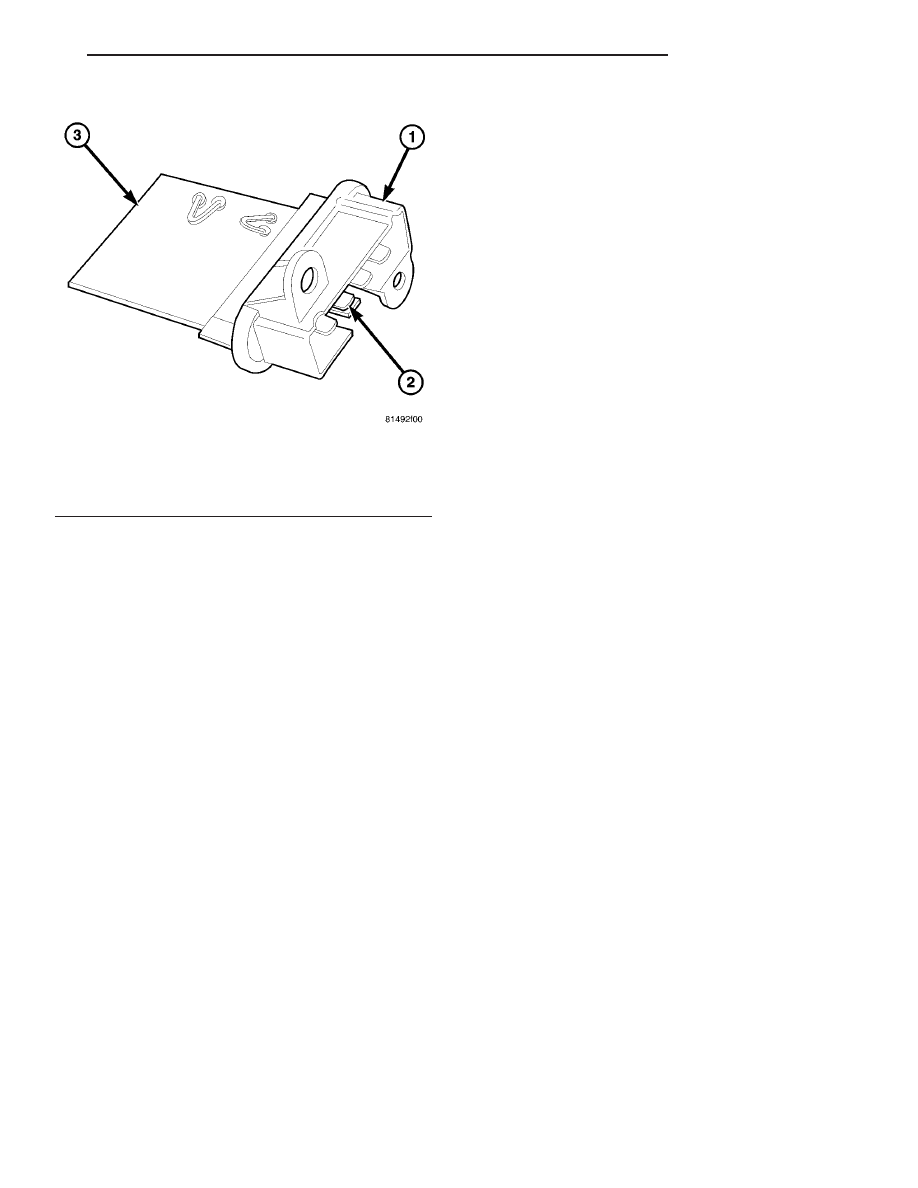Chrysler Sebring, Stratus sedan, Sebring Convertible. Manual - part 732

OPERATION
The blower motor resistor is connected to the vehi-
cle electrical system through a dedicated wire lead
and connector of the HVAC wire harness. The blower
motor resistor has multiple resistor circuits, each of
which will reduce the current flow through the
blower motor to change the blower motor speed.
The blower motor switch in the MTC heating-A/C
system directs the ground path for the blower motor
through the correct resistor circuit to obtain the
selected speed. With the blower motor control in the
lowest speed position, the ground path for the blower
motor is applied through all of the resistor circuits.
Each higher speed selected with the blower motor
control
applies
the
blower
motor
ground
path
through fewer of the resistor circuits, increasing the
blower motor speed.
The blower motor resistor cannot be adjusted or
repaired and, if faulty or damaged, it must be
replaced.
DIAGNOSIS AND TESTING
BLOWER MOTOR RESISTOR
WARNING: On vehicles equipped with airbags, dis-
able the airbag system before attempting any steer-
ing wheel, steering column, or instrument panel
component diagnosis or service. Disconnect and
isolate the negative battery (ground) cable, then
wait two minutes for the airbag system capacitor to
discharge before performing further diagnosis or
service. This is the only sure way to disable the air-
bag system. Failure to take the proper precautions
could result in accidental airbag deployment and
possible personal injury or death.
NOTE: For circuit descriptions and diagrams, refer
to the appropriate wiring information. The wiring
information includes wiring diagrams, proper wire
and connector repair procedures, further details on
wire harness routing and retention, as well as pin-
out and location views for the various wire harness
connectors, splices and grounds.
(1) Disconnect and isolate the negative battery
cable.
(2) Disconnect the wire harness connector from the
blower motor resistor (Refer to 24 - HEATING & AIR
CONDITIONING/CONTROLS/BLOWER
MOTOR
RESISTOR - REMOVAL).
(3) Using
an
ohmmeter,
check
for
continuity
between all of the blower motor resistor terminals. In
each case there should be continuity. If OK, repair
the wire harness circuits between the blower motor
switch and the blower motor resistor or blower motor
as required. If not OK, replace the faulty blower
motor resistor.
REMOVAL
WARNING: On vehicles equipped with airbags, dis-
able the airbag system before attempting any steer-
ing wheel, steering column, or instrument panel
component diagnosis or service. Disconnect and
isolate the battery negative (ground) cable, then
wait two minutes for the airbag system capacitor to
discharge before performing further diagnosis or
service. This is the only sure way to disable the air-
bag system. Failure to take the proper precautions
could result in accidental airbag deployment and
possible personal injury or death.
WARNING: The blower motor resistor may get very
hot during normal operation. If the blower motor
was turned on prior to servicing the blower motor
resistor, wait five minutes to allow the resistor to
cool before performing diagnosis or service. Failure
to take this precaution can result in personal injury.
Fig. 32 Blower Motor Resistor
1 - MOUNTING PLATE
2 - WIRE HARNESS CONNECTOR
3 - RESISTOR CIRCUIT BOARD
JR
CONTROLS
24 - 27
BLOWER MOTOR RESISTOR (Continued)